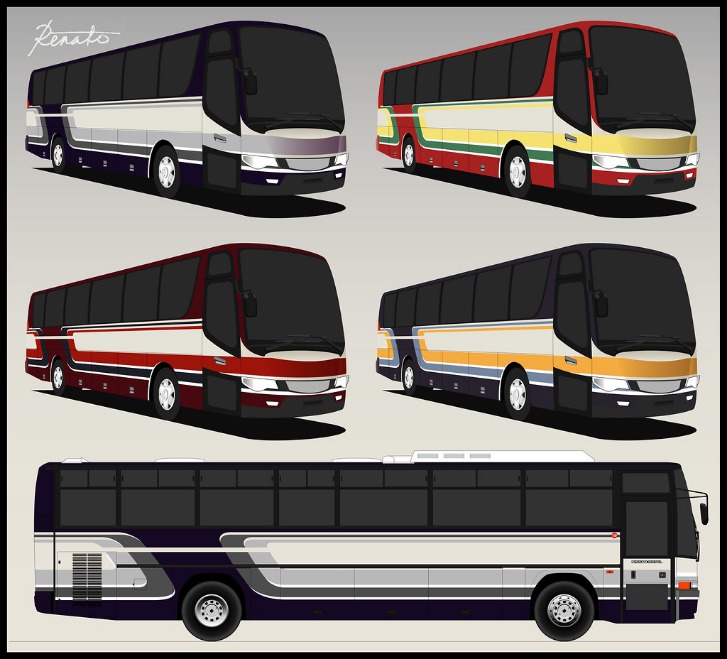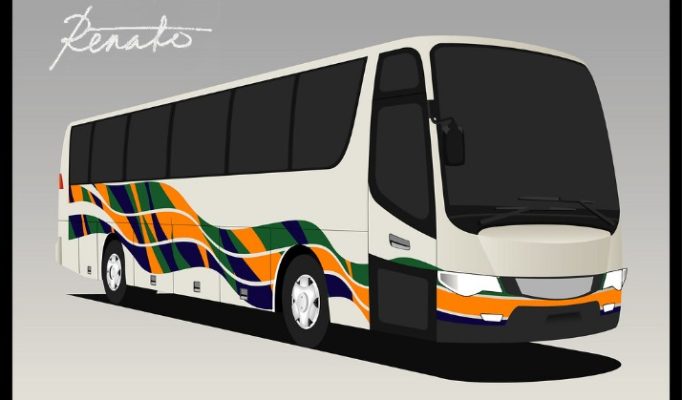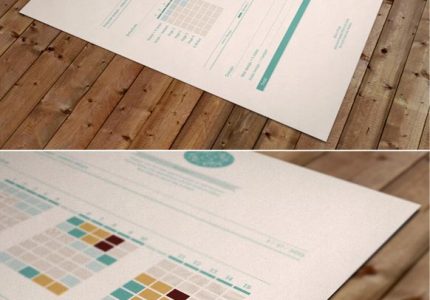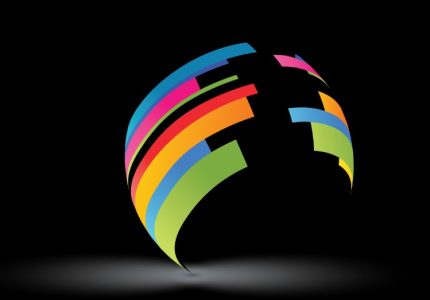Overview of Graphic Design Companies
Graphic design companies play a vital role in shaping visual communication and branding for businesses across various industries. These companies specialize in creating compelling visuals, logos, advertisements, and digital content that help clients stand out in a crowded marketplace. Understanding the landscape of graphic design firms can provide valuable insights into the industry’s trends, expertise, and the range of services offered.
Definition and Role in Business
Graphic design companies play a vital role in helping businesses communicate their brand message visually. They specialize in creating visual content that captures attention, conveys messages effectively, and enhances brand identity. These companies offer services such as logo design, branding, marketing materials, web design, and multimedia projects.
Their primary role in business is to develop compelling visual identities that differentiate companies from their competitors. By combining creativity with strategic thinking, graphic design firms help businesses establish a memorable presence in the market. Their work not only attracts customers but also fosters brand loyalty and trust, making them essential partners in any company’s marketing and communication efforts.
Types of Graphic Design Agencies
Graphic design companies play a vital role in creating visual content that communicates messages effectively to target audiences. They offer a wide range of services tailored to meet diverse branding, marketing, and communication needs. Understanding the different types of graphic design agencies can help clients choose the right partner for their projects.
Overview of Graphic Design Companies
Graphic design companies vary in size, specialization, and the range of services they provide. Some focus on branding and identity, creating logos and brand guidelines, while others may specialize in digital design, print media, or multimedia. These companies employ talented designers, illustrators, and marketers to craft visually compelling content that enhances brand visibility and engagement.
Types of Graphic Design Agencies
- Branding and Identity Agencies
- Advertising and Marketing Agencies
- Digital and Web Design Agencies
- Print Design Agencies
- Multimedia and Motion Graphics Studios
Key Services Offered by Graphic Design Companies
Graphic design companies provide a vital range of services that help businesses establish a strong visual identity and communicate effectively with their audience. From creating eye-catching logos and branding materials to designing websites, packaging, and marketing collateral, these companies offer innovative solutions tailored to meet diverse client needs. Their expertise in visual communication ensures that brands stand out and leave a lasting impression in a competitive marketplace.
Brand Identity and Logo Design
Graphic design companies offer a wide range of key services that help businesses establish a strong visual presence. These include branding, digital and print design, advertising materials, packaging design, and website development. They focus on creating visually compelling content that effectively communicates a company’s message and appeals to its target audience.
Brand identity and logo design are fundamental services provided by graphic design companies. Brand identity encompasses the visual elements that represent a business, such as color schemes, typography, imagery, and overall style, ensuring consistency across all platforms. Logo design is a central aspect of brand identity, involving the creation of a unique and memorable symbol that encapsulates the company’s essence. A well-designed logo helps build brand recognition, trust, and credibility in the marketplace.
Print and Packaging Design
Graphic design companies offer a wide range of services that help businesses create a strong visual identity and effective marketing materials. These services include branding and logo design, which establish a unique identity for a company, as well as website and digital design to enhance online presence. They also provide advertising design for campaigns, social media graphics, and multimedia presentations. Additionally, graphic design firms specialize in print and packaging design, creating visually appealing packaging that attracts customers and communicates brand values. From brochures and posters to product packaging and labels, these companies ensure that every visual element aligns with the brand’s message and appeals to the target audience.
Digital and Web Design
Graphic design companies provide a wide range of essential services that help businesses communicate their brand message effectively. These services include logo creation, branding and identity development, and marketing collateral design such as brochures, flyers, and posters. Additionally, they offer digital and web design services, including website layout design, user interface (UI) and user experience (UX) design, responsive web development, and landing page creation. By combining creativity with technical expertise, these companies ensure that brands stand out in both print and digital spaces, ultimately helping clients attract and engage their target audiences.
Marketing Materials and Advertising
Graphic design companies offer a wide range of key services to help businesses create a strong visual identity and effectively communicate their message. These services include logo design, branding, and visual identity development, which establish a recognizable brand image. They also provide marketing materials such as flyers, brochures, posters, and business cards that are tailored to attract and engage target audiences. Additionally, graphic design firms craft advertising campaigns, including digital ads, banners, social media graphics, and print advertisements, to promote products and services. Through these offerings, graphic design companies support companies in building a cohesive and impactful visual presence across various platforms and mediums.
UI/UX Design Services
Graphic design companies offer a wide range of key services that help businesses establish a strong visual identity and communicate effectively with their audience. These services include logo creation, branding, print design, digital marketing materials, and advertising campaigns. Additionally, they provide web design, packaging design, and multimedia production to enhance brand visibility and engagement.
UI/UX design services are an essential part of graphic design companies, focusing on creating user-centered interfaces that are both aesthetically pleasing and highly functional. These services involve wireframing, prototyping, user research, and usability testing to ensure a seamless and enjoyable user experience across websites and mobile applications. By combining creative visual design with practical usability, graphic design companies help clients build intuitive platforms that foster user satisfaction and loyalty.
How to Choose the Right Graphic Design Company
Choosing the right graphic design company is a crucial step toward elevating your brand’s visual identity and ensuring your marketing efforts stand out. With numerous options available, it’s important to consider factors such as experience, portfolio quality, and understanding of your industry. A good graphic design company should align with your goals and demonstrate creativity, reliability, and a collaborative approach to bring your vision to life.
Assessing Portfolio Quality
When selecting a graphic design company, evaluating the quality of their portfolio is a crucial step to ensure they can meet your aesthetic and functional needs. A well-curated portfolio showcases the company’s versatility, creativity, and technical skills through a diverse range of projects. Look for consistency in style, attention to detail, and the ability to adapt to different industries or branding requirements. Review the projects carefully to see if their design approach aligns with your vision and branding goals. Additionally, consider the professionalism of the presentation, the clarity of project descriptions, and whether they highlight problem-solving skills and innovative ideas. A strong portfolio not only demonstrates proficiency but also gives insight into the company’s capacity to handle your specific project successfully.
Understanding Their Creative Process
Choosing the right graphic design company involves understanding their creative process to ensure their approach aligns with your vision and goals. A clear process typically includes initial research and concept development, where the company gathers insights about your brand and target audience. This is followed by brainstorming and sketching, allowing for diverse ideas to emerge. The design phase involves digital creation, incorporating feedback and revisions to refine the visuals. Finally, the company should provide a comprehensive delivery, ensuring the final product is versatile and ready for various platforms. By understanding these steps, you can select a company that is transparent about their workflow and demonstrates a commitment to collaboration and quality.
Checking Client Testimonials and Reviews
When selecting a graphic design company, checking client testimonials and reviews is a crucial step to ensure you choose a reliable and skilled partner. These reviews provide insights into the company’s work ethic, creativity, ability to meet deadlines, and overall client satisfaction. Look for detailed feedback that highlights specific projects and outcomes to gauge their expertise. Additionally, consider the consistency of positive reviews and how the company responds to any negative feedback. This information helps you assess whether the company aligns with your project needs and expectations, ultimately guiding you towards making a well-informed decision.
Evaluating Pricing and Turnaround Times
Choosing the right graphic design company involves careful consideration of multiple factors, including pricing and turnaround times, to ensure your project is completed successfully within budget and schedule.
- Compare Pricing Structures: Request detailed quotes from several companies to understand their pricing models, whether hourly, project-based, or retainer. Be wary of extremely low prices, which may indicate lower quality or hidden costs.
- Evaluate Turnaround Times: Ask for estimated completion dates and assess whether these timelines align with your project deadlines. Reliable companies should provide clear timelines and communicate promptly if delays occur.
- Review Portfolio and Experience: Check each company’s previous work to gauge their expertise and style compatibility with your project needs.
- Consider Client Feedback and Reviews: Read reviews and testimonials to understand the company’s professionalism, adherence to deadlines, and transparency with pricing.
- Discuss Revisions and Additional Costs: Clarify policies regarding revisions and extra charges to avoid surprises later on.
- Assess Communication and Customer Service: Effective communication is crucial for timely delivery and budget management; choose a company that is responsive and transparent.
Ensuring Cultural and Industry Compatibility
Choosing the right graphic design company is crucial for ensuring your brand’s visual identity aligns with your cultural values and industry standards. A compatible company will understand your target audience, industry nuances, and communication style, leading to more effective and cohesive branding. To make an informed decision, it’s essential to evaluate potential partners on several key factors.
- Assess their portfolio to ensure their style resonates with your brand’s aesthetic and industry requirements.
- Verify their experience working within your industry to understand their familiarity with industry-specific design trends and regulations.
- Check references or reviews to gain insight into their professionalism, reliability, and ability to deliver on cultural nuances.
- Discuss their process for understanding your company culture and target audience to ensure alignment from the outset.
- Evaluate their communication skills and willingness to collaborate, as effective teamwork is vital for cultural compatibility.
- Consider their geographical location and language capabilities to facilitate smoother collaboration and communication.
- Ensure their design approach incorporates flexibility to adapt to your evolving brand and industry changes.
By carefully analyzing these aspects, you can select a graphic design company that not only meets your technical needs but also shares your cultural values and understands your industry context, leading to a more successful partnership.
Top Graphic Design Companies in the Industry
In the dynamic world of visual communication, top graphic design companies stand out for their innovative approaches and creative excellence. These industry leaders craft compelling visuals that elevate brands, influence audiences, and set trends in the design landscape. From branding and marketing to digital media, the best graphic design firms are integral players shaping the future of visual storytelling.
Global Leaders and Notable Agencies
The graphic design industry is home to several top companies that have established themselves as global leaders through innovative work and creative excellence. These agencies are renowned for their ability to craft compelling visual stories that resonate across various media platforms, setting industry standards and inspiring new generations of designers.
- Pentagram: One of the world’s most renowned design firms, known for diverse branding, identity, and visual communication projects.
- Frog Design: A global innovation firm specializing in user experience, branding, and product design that combines creativity with technology.
- `Sagmeister & Walsh`: A boutique agency celebrated for bold, artistic, and impactful visual design and branding work.
- Landor & Fitch: A strategic branding agency recognized for transforming brands and delivering innovative visual identities on a global scale.
- Striking Distance: Known for cutting-edge digital design, branding, and creative strategies that push visual boundaries.
- MetaDesign: An international design consultancy focusing on brand strategy, visual identity, and interactive experiences.
- Anton & Irene: A creative duo celebrated for pioneering design projects that blend art and technology seamlessly.
- Diese Design: A global agency specializing in branding, packaging, and digital design with a focus on storytelling and user engagement.
Emerging Boutique Firms
In the dynamic world of graphic design, top industry companies are renowned for their innovative and high-quality visual solutions that set standards across various sectors. These established firms often have a global presence, extensive portfolios, and pioneering approaches that define the industry’s best practices.
Among the leaders are well-known names like Pentagram, Landor & Fitch, and IDEO, each distinguished for their creative excellence and successful brand campaigns. These companies leverage cutting-edge technology and diverse talent to deliver impactful designs for clients worldwide.
In addition to the giants, emerging boutique firms are making significant waves with their fresh perspectives and personalized service. These smaller studios often specialize in niche markets, offering highly tailored and innovative design solutions that stand out in a competitive landscape. Examples include organizations like House of Young, Studio Muti, and Blackship Studio, which are gaining recognition for their creativity and agility.
Both top-tier and boutique firms play vital roles in shaping contemporary visual culture, continuously pushing the boundaries of graphic design to engage audiences effectively and creatively.

Specialized Design Studios
In the dynamic world of graphic design, several companies stand out for their innovative approach and industry influence. These top graphic design companies are known for delivering exceptional visual solutions across branding, advertising, and digital media. Specialized design studios also play a crucial role by focusing on niche markets, offering tailored services to meet specific client needs.
- Pentagram
- Landor & Fitch
- Siegel+Gale
- MetaDesign
- Frog Design
- Creative Market
- DesignBridge
- MetaDesign
- R/GA
- CBX
Trends in the Graphic Design Industry
As the graphic design industry continues to evolve, new trends are shaping the way companies create and deliver visual content. From innovative use of technology to the embrace of minimalism and sustainability, design firms are constantly adapting to meet the changing demands of clients and audiences. Staying ahead of these trends is essential for graphic design companies aiming to remain competitive and creatively relevant in a dynamic digital landscape.
Use of AI and Automation
Graphic design companies are increasingly embracing AI and automation to enhance creativity and efficiency. These technologies enable designers to streamline repetitive tasks, such as resizing images or generating color palettes, freeing up more time for innovative work. AI-driven tools also facilitate rapid prototyping and personalized designs, helping companies deliver tailored solutions to clients swiftly. Additionally, automation in project management and client communication improves workflow organization and customer experience. Overall, integrating AI and automation is shaping a future where graphic design companies can operate more dynamically, foster creativity, and stay competitive in a rapidly evolving industry.
Focus on Sustainability and Eco-Friendly Design
In recent years, graphic design companies have increasingly embraced sustainability and eco-friendly practices to align with global environmental concerns. This trend reflects a growing awareness within the industry of the impact that design processes and materials can have on the planet. Many firms are now prioritizing the use of recycled, biodegradable, and low-impact materials in their projects, while also implementing digital workflows to reduce paper and energy consumption. Additionally, consultants and clients are demanding more eco-conscious solutions, encouraging designers to innovate with sustainable concepts and messaging. As a result, eco-friendly design has become a key differentiator among agencies, contributing to a more responsible and environmentally aware graphic design industry.
Interactive and Motion Design
Graphic design companies are increasingly embracing trends in interactive and motion design to stay competitive and engage audiences effectively. These trends reflect the evolving landscape of digital communication, where dynamic visuals and user interactivity play crucial roles in brand storytelling and user experience.
- Integration of Augmented Reality (AR) and Virtual Reality (VR) into motion design to create immersive experiences that captivate viewers.
- Use of micro-interactions and subtle animations to enhance user interface and improve engagement on websites and apps.
- Adoption of bold, vibrant color palettes combined with minimalistic layouts to balance visual appeal and clarity in motion graphics.
- Implementation of AI-driven tools to automate and personalize interactive content, enabling tailored user experiences.
- Focus on storytelling through dynamic video content, blending static design with motion elements to convey complex messages effectively.
Personalization and User-Centric Approaches
In the rapidly evolving landscape of the graphic design industry, trends are leaning heavily towards personalization and user-centric approaches. Design companies are increasingly focusing on creating customized solutions that cater to individual preferences, ensuring each project resonates uniquely with its audience. This shift emphasizes understanding user behaviors and integrating data-driven insights to craft experiences that are both engaging and relevant. As consumers seek more meaningful interactions, graphic design firms are adopting intuitive interfaces, adaptive visuals, and personalized content to stand out in a competitive market. Overall, these trends reflect a broader move toward prioritizing the end-user’s needs, fostering stronger connections between brands and their audiences.
Challenges Faced by Graphic Design Companies
Graphic design companies often encounter a range of challenges that can impact their growth and success. From rapidly evolving technology to fierce competition, these businesses must continuously adapt to stay relevant in a dynamic industry. Additionally, maintaining a consistent creative vision while meeting client expectations and managing tight deadlines can pose significant hurdles. Navigating these challenges requires innovation, flexibility, and a keen understanding of market trends.
Keeping Up with Technological Advances
Graphic design companies face numerous challenges in staying competitive and relevant in a rapidly evolving industry. One of the primary difficulties is keeping pace with technological advances, as new software, tools, and platforms are constantly emerging. This requires ongoing investment in training and equipment to ensure designers are proficient in the latest techniques. Additionally, rapid technological changes can make existing skills obsolete quickly, forcing companies to adapt or fall behind. Maintaining a balance between creative innovation and technical expertise is also a challenge, as companies need to deliver cutting-edge designs while mastering complex tools. Furthermore, the fast-paced nature of digital and social media demands quick turnaround times, putting pressure on resources and workflows. Staying ahead in an industry driven by innovation requires continuous learning, agility, and strategic planning to leverage new technologies effectively.
Balancing Creativity and Client Expectations
Graphic design companies often face the challenge of balancing creativity with client expectations, which can be a delicate task. While clients seek innovative and visually appealing designs, they also have specific requirements that need to be met, sometimes limiting the designer’s creative freedom. This tension can lead to compromises that may dilute the artistic vision or cause frustration on both sides.
Additionally, managing client feedback and making revisions without losing the original design intent presents another challenge. Clear communication is crucial, but misunderstandings or differing perceptions of aesthetic value can hinder progress. Designers must navigate these dynamics carefully to deliver results that satisfy clients while maintaining their own creative integrity.
Furthermore, ever-changing market trends and technological advancements require graphic design companies to continually adapt and learn new skills. Striking a balance between staying current and preserving unique design styles is essential to differentiate themselves in a competitive industry.
Overall, successfully managing the intersection of creativity and client expectations is vital for the reputation and growth of graphic design companies, necessitating flexibility, communication, and a deep understanding of both artistic and practical considerations.
Managing Deadlines and Workload
Managing deadlines and workload is one of the primary challenges faced by graphic design companies. The fast-paced nature of the industry demands timely delivery without compromising quality, which can create significant pressure on designers and project managers alike.
- Balancing multiple projects simultaneously often leads to overextension, increasing the risk of burnout among team members.
- Unclear or constantly changing client expectations can result in repeated revisions, causing delays and increased workload.
- Meeting strict deadlines while maintaining high creative standards requires efficient workflow management and resource allocation.
- Unexpected client requests or last-minute changes can disrupt planned schedules and strain available resources.
- Limited manpower or skill gaps may hinder the ability to meet project demands within specified timeframes.
Future Outlook for Graphic Design Companies
The future outlook for graphic design companies is promising as advancements in technology and changing consumer preferences continue to reshape the industry. Embracing trends such as augmented reality, artificial intelligence, and sustainable design practices will be crucial for staying competitive. With increasing demand for visually compelling content across digital platforms, graphic design firms are poised to experience significant growth and innovation in the coming years.
Growing Demand for Digital Branding
The future outlook for graphic design companies appears highly promising, driven by the increasing emphasis on digital branding and online presence. As businesses continue to recognize the importance of visually compelling and cohesive brand identities, demand for innovative design solutions is expected to grow significantly. Companies will likely invest more in digital marketing strategies, requiring skilled graphic designers to create engaging content for websites, social media, and other digital platforms. Advancements in technology, such as augmented reality and interactive designs, will also open new avenues for creative expression and client engagement. Overall, graphic design firms that adapt to the evolving digital landscape and prioritize brand storytelling will be well-positioned for sustained growth in the years ahead.
Integration of Virtual and Augmented Reality
The future outlook for graphic design companies is increasingly optimistic as the integration of virtual reality (VR) and augmented reality (AR) continues to reshape the industry. These advanced technologies are opening new creative avenues and transforming how brands engage with their audiences, offering immersive and interactive experiences that were previously unimaginable.
- Enhanced Client Engagement: VR and AR enable companies to create more captivating and interactive visual content, helping clients better visualize projects and concepts.
- Innovative Design Solutions: The incorporation of VR and AR tools fosters innovative approaches in designing immersive environments and 3D visualizations, setting companies apart in a competitive market.
- Expanded Market Opportunities: As VR and AR become more accessible, graphic design firms can tap into new sectors such as gaming, education, healthcare, and virtual events, broadening their client base.
- Talent Development & Collaboration: The adoption of these technologies encourages the development of specialized skills within teams, enhancing collaboration and enabling the production of cutting-edge designs.
- Increased Investment & Growth: With technological advancements driving demand, investment in VR and AR capabilities is expected to rise, fueling growth and innovation within graphic design companies.
Overall, graphic design companies that embrace VR and AR integrations are poised to lead the industry into a new era of creativity and engagement, offering unparalleled levels of interactivity and visual sophistication.
Expanding Roles in UX and Product Design
The future outlook for graphic design companies is highly promising, as their roles continue to expand beyond traditional visual branding into essential areas like user experience (UX) and product design. As digital platforms become increasingly dominant, businesses recognize the importance of creating seamless and engaging user interactions, driving demand for specialized design expertise. Graphic design firms are now evolving to include UX/UI specialists, blending visual creativity with functional usability to meet modern consumer expectations. Additionally, the integration of technology such as virtual reality, augmented reality, and interactive media presents new opportunities for innovative design solutions. This expanding scope allows graphic design companies to diversify their services, attract a broader client base, and maintain relevance in a rapidly changing digital landscape.





